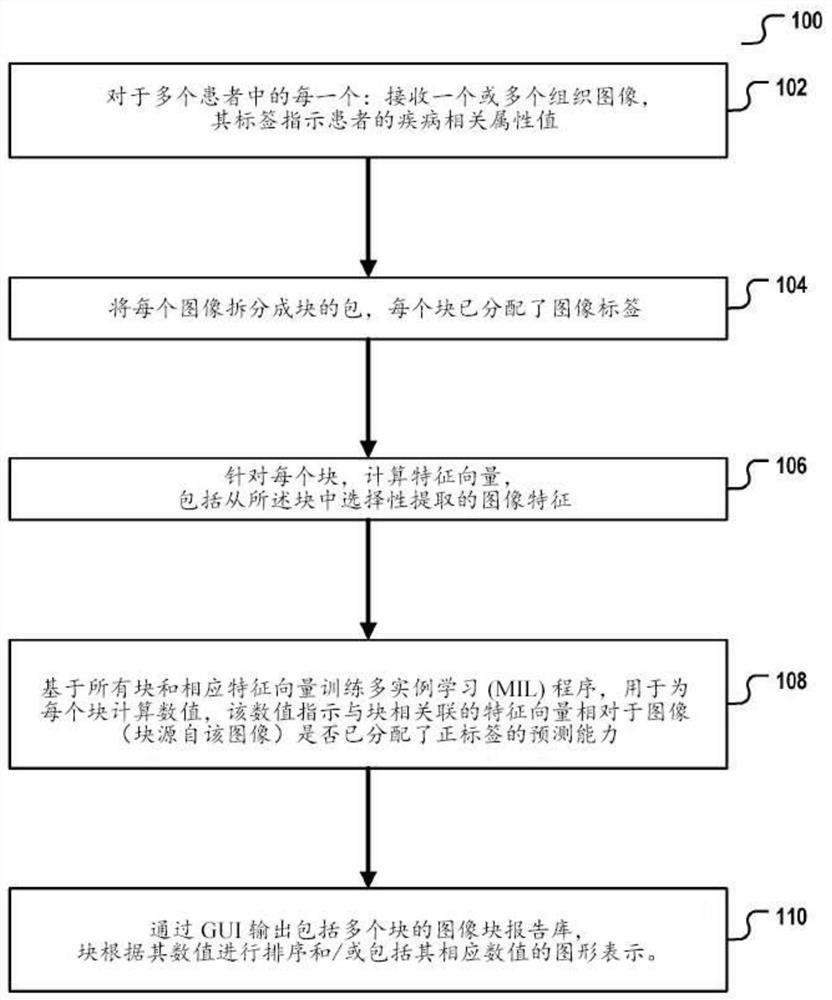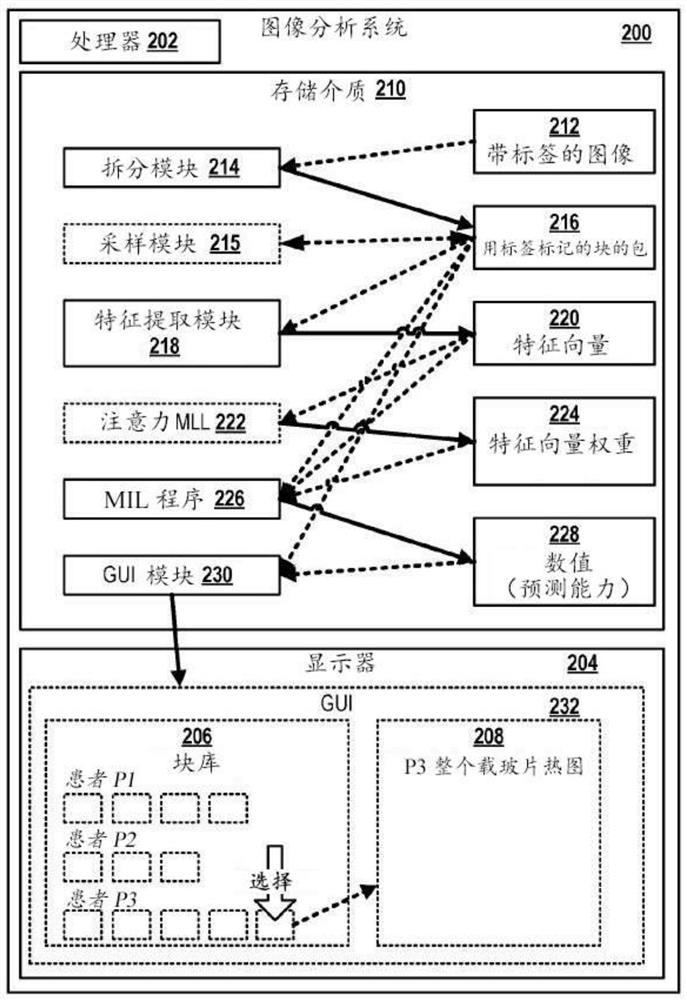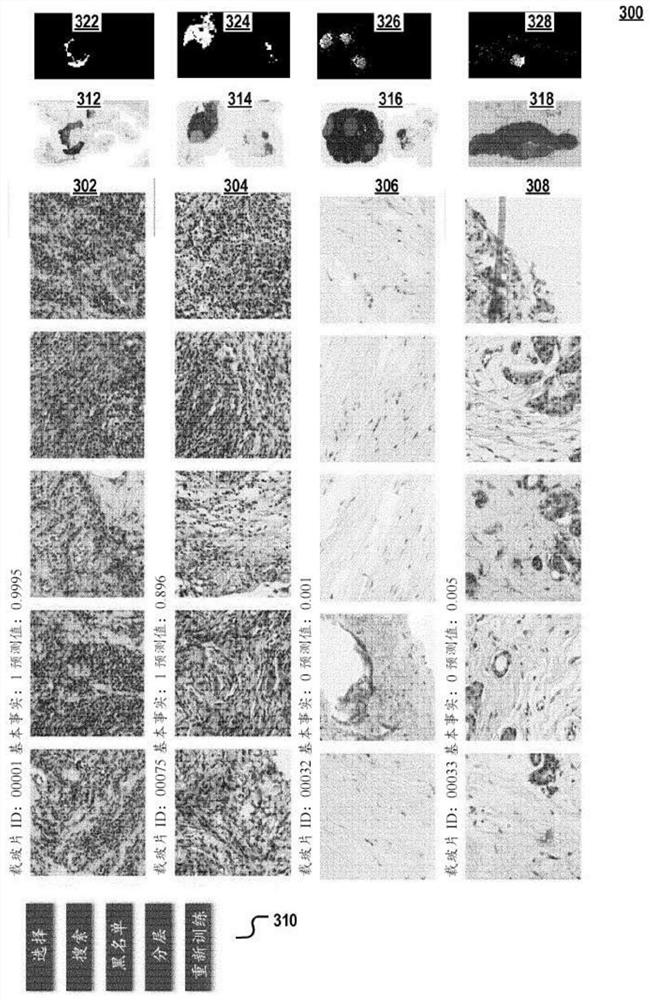Multiple instance learner for prognostic tissue pattern identification
A tissue model and tissue sample technology, applied in the field of image analysis and digital pathology, can solve problems such as the inability to accurately point out that the prediction has a final decisive role
- Summary
- Abstract
- Description
- Claims
- Application Information
AI Technical Summary
Problems solved by technology
Method used
Image
Examples
Embodiment Construction
[0207] figure 1 A flowchart of a method according to an embodiment of the present invention is shown. The method can be used, for example, to predict patient-related attribute values of a patient, such as, for example, biomarker status, diagnosis, treatment outcome, microsatellite status (MSS) for a particular cancer (such as colorectal or breast cancer), microsatellite status (MSS) in lymph nodes, Micrometastases and pathological complete response (pCR) on diagnostic biopsy. Predictions are based on digital images of histological slides using deep learning based - preferably assumption-free - feature extraction.
[0208] Method 100 can be used to train weakly supervised deep learning computer algorithms designed to identify and extract heretofore unknown predictive histological signatures. The method allows the identification of organizational patterns indicative of patient-related attribute values.
[0209] A tissue sample from a patient may be provided, for example in...
PUM
 Login to View More
Login to View More Abstract
Description
Claims
Application Information
 Login to View More
Login to View More - R&D
- Intellectual Property
- Life Sciences
- Materials
- Tech Scout
- Unparalleled Data Quality
- Higher Quality Content
- 60% Fewer Hallucinations
Browse by: Latest US Patents, China's latest patents, Technical Efficacy Thesaurus, Application Domain, Technology Topic, Popular Technical Reports.
© 2025 PatSnap. All rights reserved.Legal|Privacy policy|Modern Slavery Act Transparency Statement|Sitemap|About US| Contact US: help@patsnap.com



